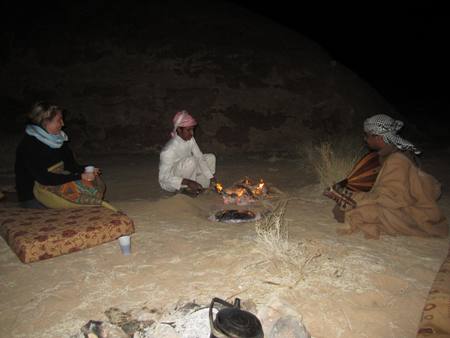| Wadi Rum |
|
History
Since prehistoric times, Wadi Rum has been inhabited by many civilizations, with many peoples–especially the Nabateans–leaving their mark in the form of rock paintings, graffiti, and temples. Nowadays, several Bedouin tribes inhabit Rum and the surrounding area, the most prominent of which is the Howeitat. While most of the inhabitants of Rum are no longer nomadic, there are still some families that live in the traditional way- moving from grazing area to grazing area with their herds of sheep, goats, and camels. You will certainly see some of these nomads’ tents on your trip through Wadi Rum.
In the West, Wadi Rum may be best known for its connection with British officer T. E. Lawrence, who based his operations here during the Arab Revolt of 1916–18. In the 1980s one of the impressive rock formations in Wadi Rum was named "The Seven Pillars of Wisdom" in reference to Lawrence's memoir of the same name, penned in the aftermath of the war.
The area gained further prominence as a climbing area in 1984 when veteran trekkers Tony Howard, Di Taylor, Mick Shaw, and Al Baker visited the area and subsequently published detailed guidebooks on the area. The two most prominent of these guidebooks are Treks & Climbs in Wadi Rum and Jordan - Walks, Treks, Caves, Climbs & Canyons, both published by Cicerone Press. Since then, tourism traffic has been steadily increasing as more and more people want to experience the beauty and serenity of Wadi Rum for themselves. |





